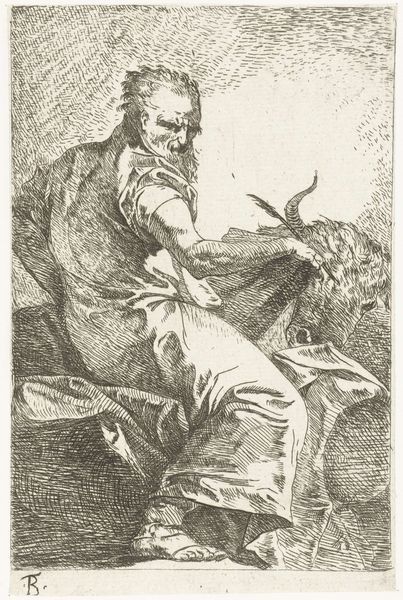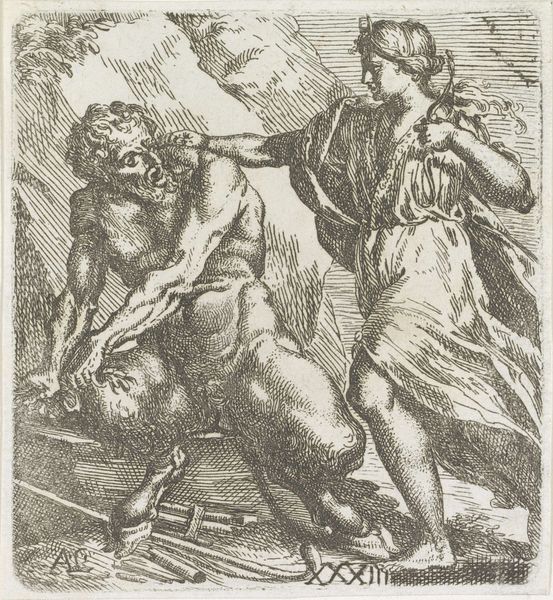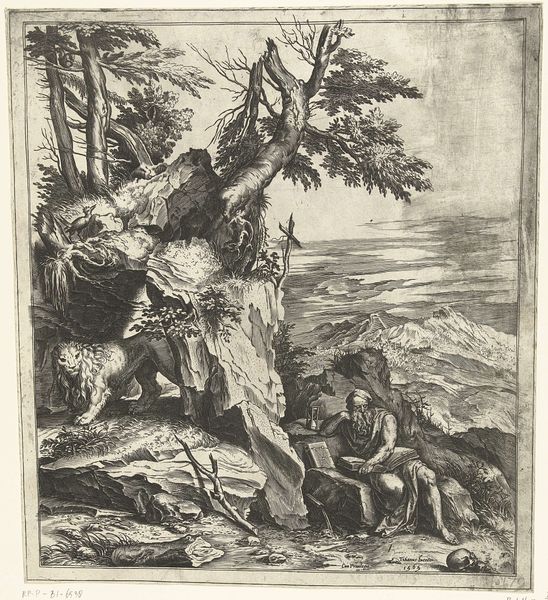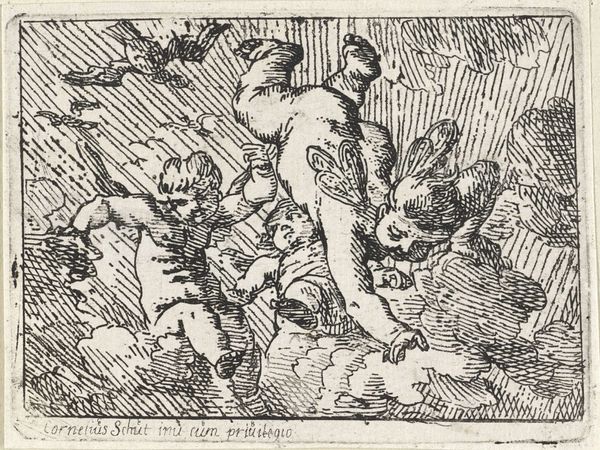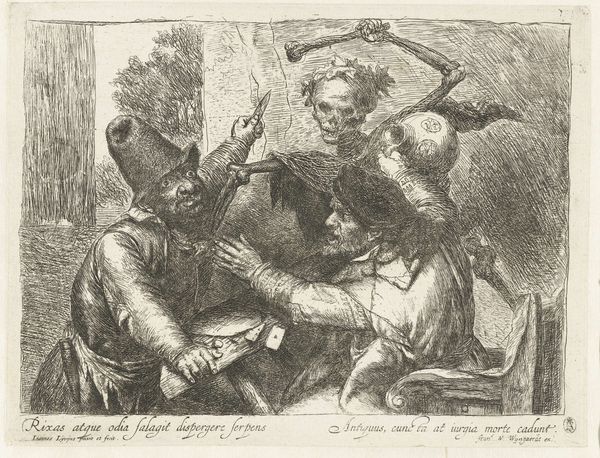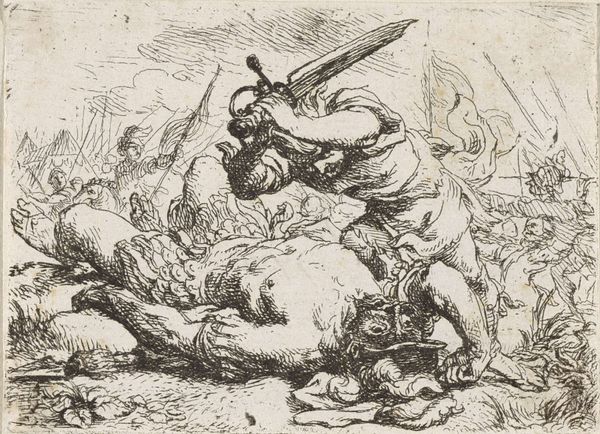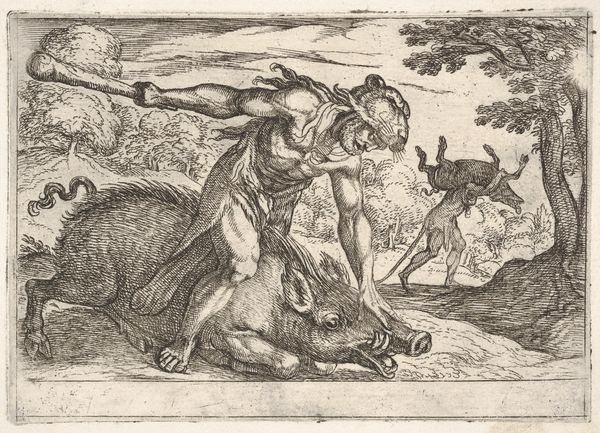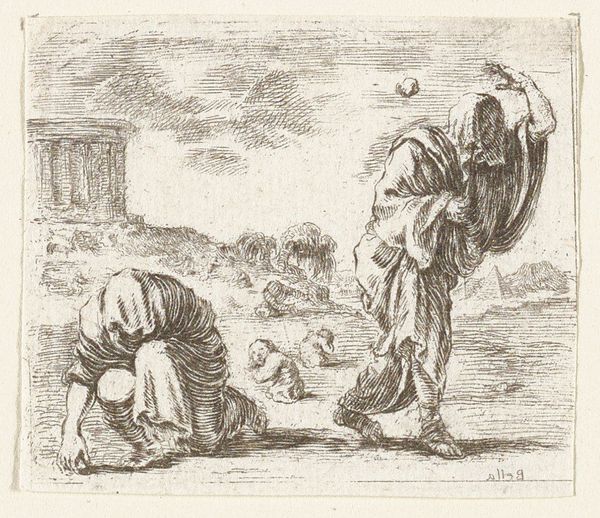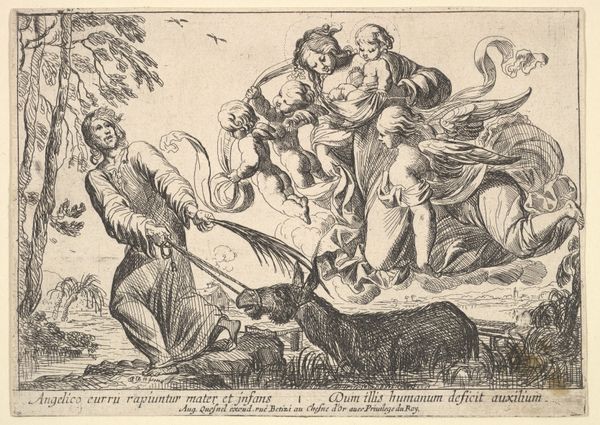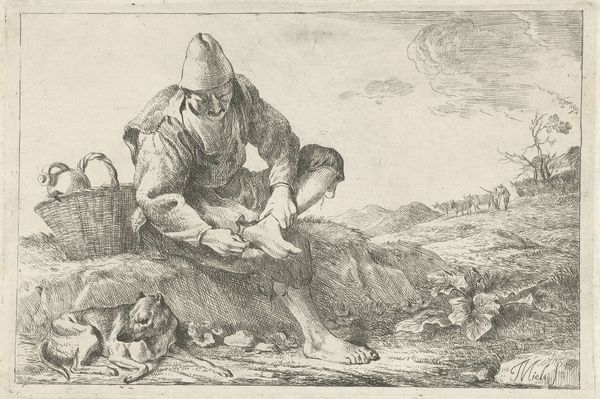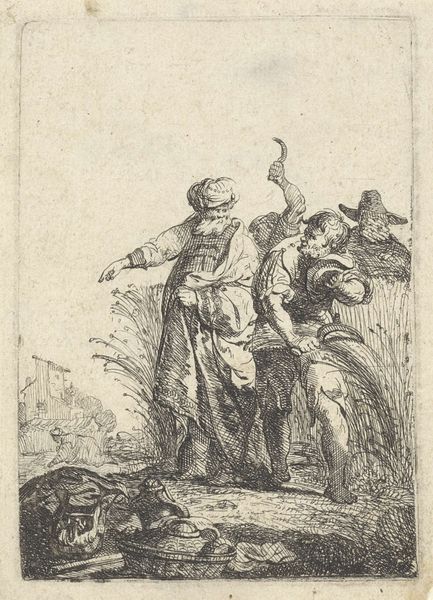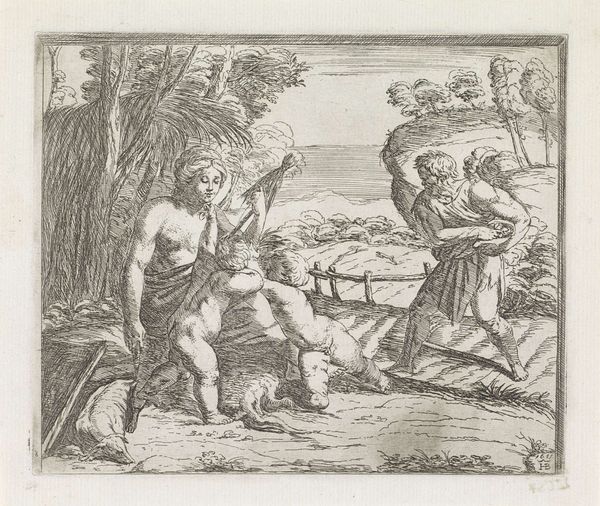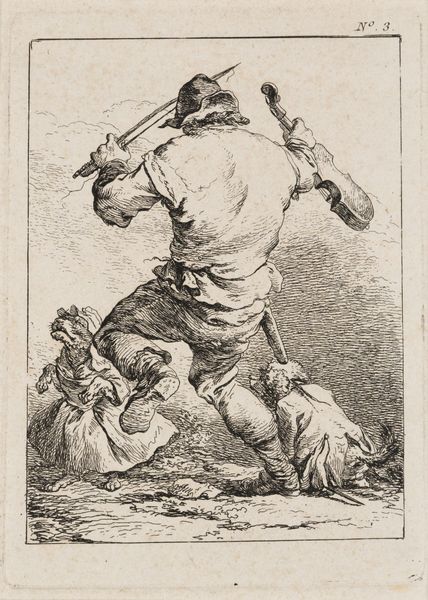
print, etching, engraving
#
baroque
# print
#
pen illustration
#
etching
#
figuration
#
line
#
history-painting
#
engraving
Dimensions: height 86 mm, width 110 mm
Copyright: Rijks Museum: Open Domain
Curator: Look at this etching, "H. Franciscus ontvangt de stigmata," dating back to 1660-1680, currently held in the Rijksmuseum collection. It’s credited to Marcantonio Bellavia. My first reaction is how striking the level of detail achieved through engraving and etching is. Editor: The first thing that strikes me is the abject vulnerability, etched quite literally into St. Francis's pose. The man is receiving a divine wound and seems far more burdened than blessed. There’s a bleakness here that stands out. Curator: Yes, that vulnerability is quite telling. Viewing this within its historical context, such imagery of St. Francis receiving the stigmata served not just as a narrative scene but as a reinforcement of the Franciscan order's sanctity, and that of the Church as a whole. The emotional depiction encouraged religious devotion. Editor: Absolutely. And when we examine the means through which that devotion was achieved – the intense labor involved in creating the printing plate, the skilled application of acid to bite into the metal, it really underscores the Church's investment in projecting that specific message. Even something like the line quality-- it’s really consistent which suggests that Bellavia had high quality tools, the work and material was all highly coordinated. Curator: Consider also the broader culture of printmaking at this time. Prints had the unique role of being both artistic objects and vehicles for disseminating ideas to a wider public than painted works might reach. Bellavia, while lesser-known today, played a role in that wider cultural communication, solidifying religious teachings throughout communities near and far. Editor: And what is so powerful about that proliferation of the image of St. Francis— the stigmata themselves, visualized here, become tools of faith. Each print becomes an artifact, and then it points back to the complex relations between material, work, and production for a spiritual entity that wants and depends on control to succeed. Curator: Indeed. Bellavia's creation does more than just show the St. Francis narrative. The image serves as another object that propagates not just faith, but Church doctrine and dominance throughout the world it served. Editor: I appreciate having looked closer. It is a fascinating reminder of the intricate dance between materials, labor, faith, and power. Curator: Indeed. This print offers us valuable insights into the cultural and religious landscape of its time, through one image that captures that historical snapshot.
Comments
No comments
Be the first to comment and join the conversation on the ultimate creative platform.
